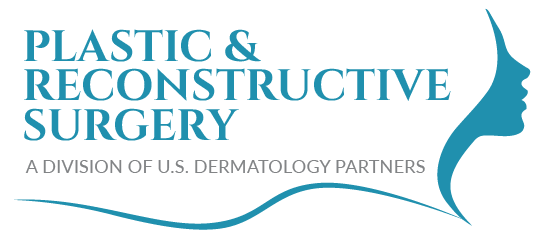Rhinoplasty, often referred to simply as a nose job, is a form of cosmetic and reconstructive surgery provided to improve the appearance of the nose and/or to correct airway defects, breaks, and other concerns. If you’re interested in rhinoplasty, there are many factors you’ll want to consider, including what to expect before, during, and after the rhinoplasty surgery. According to Dr. Sam DeVictor from Plastic & Reconstructive Surgery – a Division of U.S. Dermatology Partners, “Rhinoplasty is one of our most popular treatment options. Whether patients have broken their nose, are dealing with a deviated septum, need to address the impact of a cleft lip on their nose, or want to change the size, shape, or appearance of their nose, we can create a plan to meet their needs and support their goals through rhinoplasty.” In this blog, Dr. DeVictor will describe the preparation, surgery, and recovery process, so you can feel more knowledgeable about what to expect from rhinoplasty.
Before Your Procedure
Before you begin any facial plastic or reconstructive surgery, you’ll meet with a surgeon to review your goals and develop a personalized treatment plan. At your consultation visit, your surgeon will start by taking time to talk with you. They will want to know why you’re considering rhinoplasty and what results you’re hoping to achieve. You should be prepared to talk to your surgeon about rhinoplasty, including getting answers to the following questions about nose jobs:
- What is your training and experience?
- How many rhinoplasty surgeries have you performed?
- Can I see pictures of your past patients?
- Am I a good candidate for rhinoplasty?
- Does my health history raise any concerns about surgery risks?
- What changes do I need to make to my routine during healing?
- What do I do if there are complications?
- What happens if I don’t like the results?
In addition to asking and answering questions, your surgeon will carefully examine your nose and surrounding structures. Then, they’ll talk you through your options and what to expect during and after surgery. Your planning will include discussing what form of rhinoplasty you should choose.
Rhinoplasty surgery is personalized to the patient, but there are three main types:
- Primary Rhinoplasty – initial treatment to address health concerns or improve the appearance of the nose. This includes structural rhinoplasty as well as dorsal preservation rhinoplasty
- Revision Rhinoplasty – this is a treatment used to revise the results of a primary rhinoplasty that was not completely successful.
- Cleft Rhinoplasty – a procedure used to address the way that cleft lip and cleft palate impact the appearance of the nose as well as address any concerns with breathing or function.
During Rhinoplasty
On the day of your surgery, Dr. DeVictor says, “Make sure to arrive dressed comfortably with clean skin and no makeup. It’s important that you are comfortable and safe throughout the day of your surgery, so you should have someone available to drive you to and from your surgical appointment and keep an eye on you as you recover.”
The rhinoplasty procedure itself is broken down into the following sections:
- Anesthesia – numbing and general anesthesia or IV sedation are administered to ensure comfort throughout treatment.
- Incision – small incisions are made inside the nostrils, in the creases around the nose, and other areas where they will not be immediately noticeable.
- Reshaping – the nasal structures are adjusted and reshaped as needed.
- Surgical Site Closure – after the nose structure is adjusted, the surgeon repositions the skin and closes the incisions.
- Bandaging – the surgeon may place splints inside the nose or outside to protect it during healing. Then, the nose is bandaged.
Post-Surgery Healing & Recovery
When it comes to recovery, Dr. DeVictor says, “The most important thing for patients to know going into rhinoplasty is that they are not going to see the final results for several months, a year, or longer. Every person heals differently, and they should see some improvement within the first few weeks. However, the adjusted nasal structures will continue to heal and shift for significantly longer. Be patient and touch base with your surgeon if you’re concerned about your results.”
Following treatment, your cosmetic surgeon will provide you with specific care instructions to follow as you heal. This will include changing bandages, keeping the area clean, and getting plenty of rest. You should also take over-the-counter or prescription pain relievers as necessary to ensure comfort. Keep your head elevated during sleep to help with bleeding, swelling, and inflammation. You should not blow your nose for at least a week after surgery. After a week or two, your surgeon will schedule a follow-up visit to examine your nose and provide any additional instructions to keep your recovery headed in the right direction. For the first week or longer, you may need to stay home and relax. After at least a week, you can return to work as long as you don’t need to do any heavy lifting or other strenuous activities. Depending on your specific treatment and recovery, your surgeon will likely recommend you avoid exercise for at least two weeks following the procedure. During follow-up visits, your cosmetic surgeon will provide feedback and additional guidance to ensure you continue healing. If you notice that pain, swelling, bruising, and bleeding seem to get worse or continue for more than the first month after your procedure, make sure you are communicating these concerns with your surgeon.
Learn More About Plastic & Reconstructive Surgery
We know that you have choices when it comes to cosmetic surgery, and it’s important to choose a surgeon who will meet your needs and deliver exceptional surgical treatments in a clinical practice that is comfortable and safe. At Plastic & Reconstructive Surgery, our skilled professionals are dedicated to doing just that. You’re in good hands with our trusted cosmetic surgeons.
When you’re ready to get started, the skilled cosmetic surgeons at Plastic & Reconstructive Surgery are here to answer your questions and create a rhinoplasty treatment plan that will deliver your desired results. Getting started is quick and simple. You’ll need to take a few moments to complete our scheduling form online. Once we receive your scheduling form, a trusted member of our team will be in touch to finalize the details of your visit.

